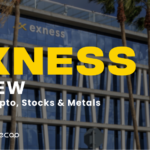GetBlock, a top-notch Blockchain-as-a-Service (BaaS) provider that supercharges decentralized applications on 40+ blockchains with high-performance API endpoints, adds nodes of Arbitrum, a resource-efficient Ethereum-based network.
Now official: Arbitrum nodes available on GetBlock
According to the official statement shared by GetBlock’s team, Arbitrum APIs have been added to its nodes toolkit. Therefore, Arbitrum becomes the latest Ethereum-based Layer-Two solution integrated by GetBlock.
To make its solution flexible for all major Web3 use-cases, GetBlock engineers enabled the access to shared and dedicated nodes of Arbitrum. Both shared and dedicated nodes of Arbitrum mainnet are available through JSON-RPC and WebSockets interfaces.
On average, GetBlock’s Arbitrum nodes are available with 99.98 percent uptime (Apr.27 – May.3). Arbitrum’s dedicated nodes are rolled out on high-end hardware in Europe, Asia, and USA; 16-thread CPUs with 64 GB DDR and NVMe SSDs allow 1 Gbit/sec connection for GetBlock clients.
GetBlock has cemented itself as a leading blockchain infrastructure provider: its Arbitrum nodes are set to guarantee the unmatched speed for dApps and negligible fees for their clients. Arbitrum nodes by GetBlock are designed to provide Web3 software with a sustainable, scalable, and cost-efficient technical basis.
What is Arbitrum and What is Special about its APIs?
Launched in mainnet in 2021, Arbitrum is among the most popular mainstream second-layer scalability solutions for Ethereum (ETH) blockchain. Not unlike its major competitor Optimism, Arbitrum leverages Optimistic Rollups technology. It broadcasts proofs to Ethereum challenging some of them to check whether they are valid.
Instead of Optimism’s single-round fraud proof, Arbitrum harnesses multi-round fraud proofs: it reduces dependency on Ethereum (ETH) network. Arbitrum leverages its own virtual machine, Arbitrum Virtual Machine or AVM. It is seamlessly compatible with Ethereum Virtual Machine.
Arbitrum nodes handle up to 4,500 transactions per second; thus, it gives Ethereum (ETH) bandwidth a 300x boost. By Q2, 2022, this is the highest result of all mainstream Ethereum L2s.











